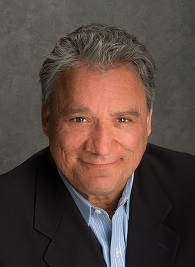
For many years, coated fabrics have been defined as either Polyvinyl Chloride (PVC) or Polyurethane (PU) textiles. They are two different polymer-based platforms—which have their own strengths and weaknesses. Both platforms are used in upholstery applications from residential to contract, and hospitality to healthcare. PVC has long been recognized as the go-to workhorse for extreme use conditions, especially in public spaces. Polyurethanes are recognized for their soft hand, unique surface feeling, and versatile design options. Both continue to thrive and offer robust options to the end-users.
However, new to our industry are silicone coated textiles. Silicone has been around for years and has been used in many different industries such as electronics, medical, consumer products, and construction. Today we are hearing much more in our industry about silicone coated textiles. From 100 percent silicone to silicone hybrids and topcoats, silicone is the latest and arguably most exciting coated polymer to join the family of coated textiles.
As with any new product platform, end-users of silicone upholstery will benefit from access to technical expertise and accurate information about the product’s features and benefits. Well-informed buyers will be more confident in their decision to use silicone upholstery in even the most demanding environments. Below are answers to some often-asked questions about silicone fabrics.
- What is silicone? Silicone is basically sand. The sand is processed into organic silicone monomer and silicone polymer.
- How is silicone produced? The silicone monomer and silicone polymer are compounded, then mixed and cast on a casting line, through coating and heating stations.
- What impact does manufacturing silicone have on the environment? The casting process is very efficient. It is powered by clean electricity; there is no off-gassing and no pollution. Very little water is used, and it is recyclable. There is no odor since silicone is odorless. Silicone processing offers the least environmental impact of any coated fabric.
- What industry performance specifications does silicone meet? Silicone will meet and exceed all industry standards from ASTM, ISO, ACT, and CFFA.
- Is silicone strong? Please refer to the given spec sheet of a product. As with any coated textile, it is the textile or the backing that gives the product most of its physical strength.
- What environmental specifications does silicone meet? Virtually all including Prop65, Reach, RoHS, LEED, and ISO 10993-5 and 10 for toxicity.
- Is silicone biodegradable? No, it is not.
- Is silicone cleanable? Yes, and in most cases, it is inherently stain-resistant. Most stains will clean up by dry erasing, soap and water, or with IPA.
- What chemicals and solvents are in silicone fabric? The beauty of silicone upholstery is that there are no solvents, heavy metals, toxic byproducts, flame retardants, anti-microbial additives, PVC, phthalates, polyurethane BPA, or formaldehyde in the product.
- How do you clean silicone? Soap and water, IPA 91 percent, 10/1 bleach, and many chemical cleaners. However, it is always best to test first or contact an expert for advice.
- How long will silicone last? With proper care and cleaning, silicone upholstery fabric will last the life of the furniture.
- Will silicone crack and peel like a PVC, or have hydrolysis issues like a PU? No, it won’t. As PVC ages, plasticizers migrate out which causes cracking, and PU’s are based on a totally different polymer system that controls the life span. Silicone shares no ingredients with PVC or PU.
- Why is silicone fabric so expensive? Well, it is an expensive product to produce. The raw materials are expensive, as they are all organic in nature. The release papers (which provide the grain) can’t be used as often as other coated fabrics and so must be replaced more frequently. The production speed is 40 percent slower than conventional coated textiles. In the future, as silicone upholstery products mature, prices may come down.
- Will silicone meet Prop 65? Yes, the product itself does not contain any chemicals listed on Prop 65. However, it could be subject to Prop 65 chemicals and cross-contamination after it leaves the manufacturing facility.
- How does silicone get decorated? Silicone has limitations on how it can be decorated. You can’t emboss on silicone, so most of the decorative looks come from release papers, printing, and digitally printing.
- What applications can I use for silicone fabrics? Virtually any upholstery application including office seating, contract, hospitality, healthcare, airports, automotive and marine.
Bill Fisch is the President of the Mitchell Group. The Mitchell Group was established in 2004 and is a major converter of coated fabrics to various upholstery markets around the world. The company’s corporate offices are located outside of Chicago in Niles, Ill. with a 100,000 sf distribution and customer service center located in Pontotoc, Miss. The trading company is located in Shanghai, China, and manages exports as well as all China-to-China business.






